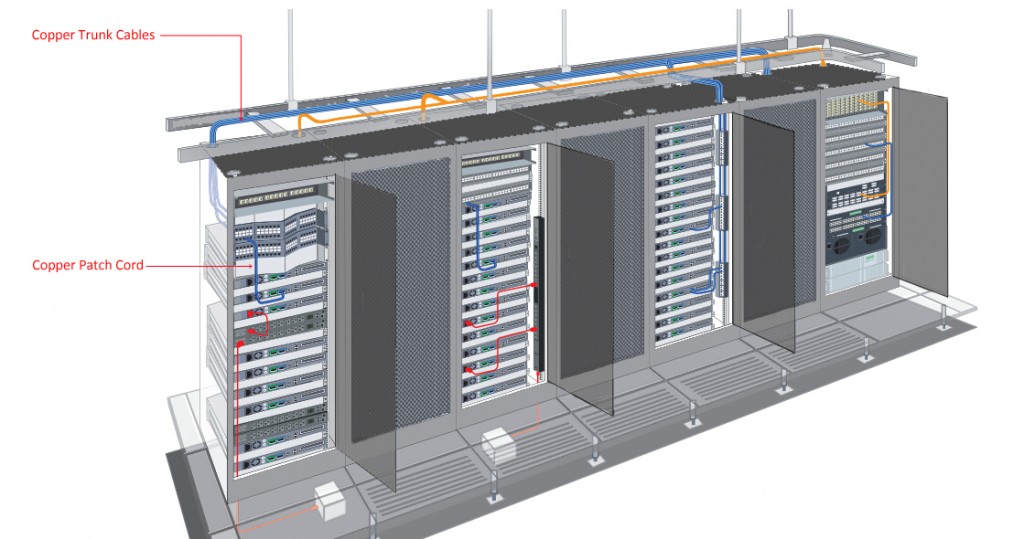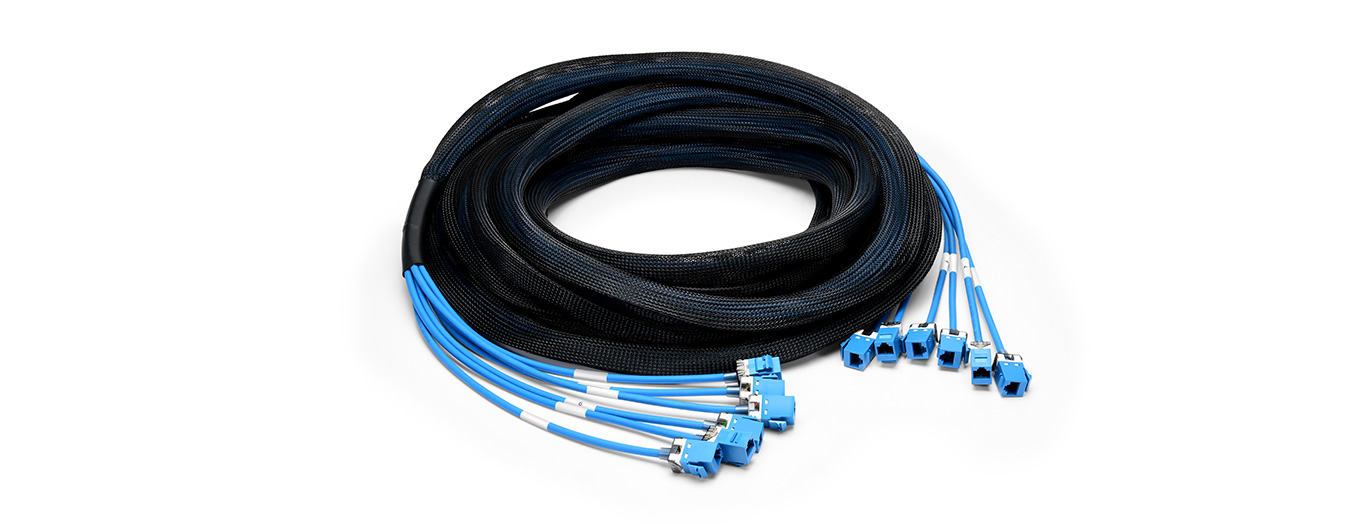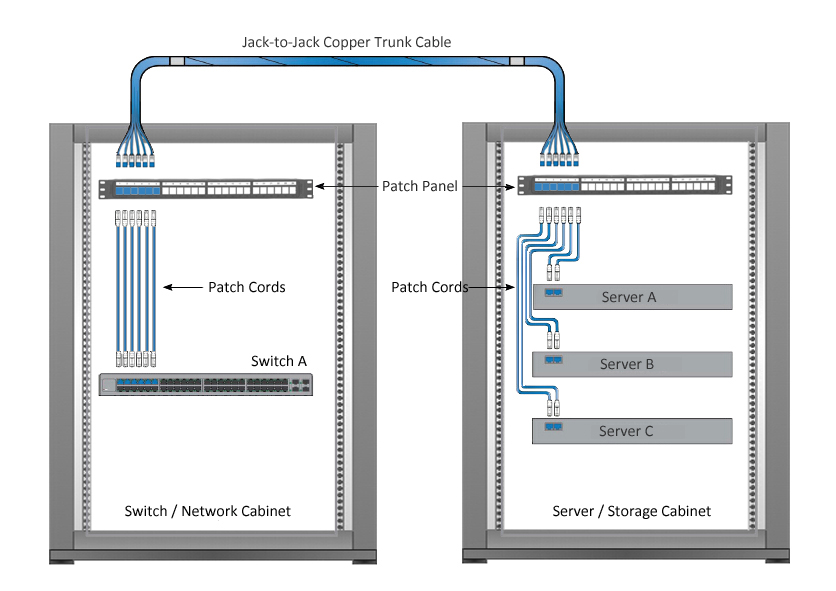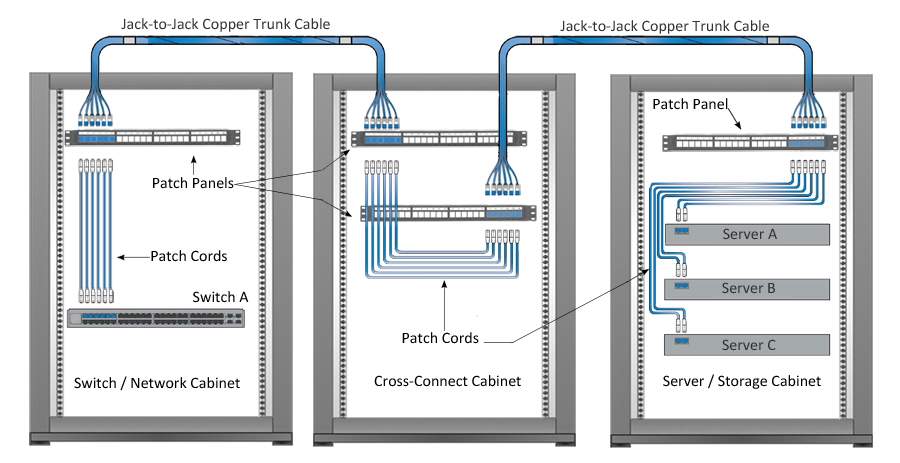Data Center Pre-terminated Copper Trunk Cable Solution
Fiber optic cables, with their benefits of longer transmission distance and less EMI, have been highly recommended to use as the next generation media of data transmission. However, within a data center, copper cables are still considered as an ideal solution as they can offer significant advantages in terms of capital expenditures, operating expenditures, and reliability. Pre-terminated copper Ethernet trunk cable, as a new copper cabling option for fast-and-easy deployment in permanent link trunks and equipment port harnesses of data center architectures are recommended in this post with interconnect and cross-connect applications.
Overview of Pre-terminated Copper Ethernet Trunk Cable
Pre-terminated copper Ethernet trunk cables are commonly used in point-to-point connections in data centers, such as achieving reliable connectivity between server and switch cabinets. And copper patch cords are however used to connect panels to switches and servers. With factory pre-terminated and tested parts, the pre-terminated copper cable assemblies can help users save time and reduce jobsite waste, which are ideal solution for data centers and other applications where speed of installation is important.

Different Types of Pre-terminated Copper Ethernet Trunk Cable
Various of termination types are available for the per-terminated trunks, such as jack-to-jack, jack-to-plug, plug-to-plug, and so on. Therefore, you need to choose the most proper one based on the layout of the data center or telecommunications room, and the design philosophy employed.
Jack-to-Jack Ethernet Trunk Cables
Deploying jack-to-jack pre-terminated copper Ethernet trunk cables requires the use of empty patch panels on each end. Patch cords would then be used to complete the channel between active equipment (i.e. servers and switches). Many users prefer to employ cross-connects instead of direct connections.

Plug-to-Plug Ethernet Trunk Cables
Plug-to-Plug copper cables are used to make a direct connection between active equipment (e.g. server to switch). It eliminates cross-connect capabilities, which is not necessary but a recommended practice. Also can be used in an open-space work area as a bundled patch cord group. Although trunks are more aesthetic in appearance, the use of multiple standard patch cords is more cost effective.

Pre-terminated Copper Cable Assemblies Use Case
As mentioned above, pre-terminated copper cable assemblies can be used in data center for backbone or intra-rack cable connectivity. This section illustrates the interconnect and cross-connect connectivity with them in universal data center cabling applications.
Interconnect
In general data center cabling, copper Ethernet trunk cables are used to make a permanent link between patch panels on each ends—one end is in a switch/network cabinet, and the other end is in a server/storage cabinet. And patch cords are usually used to interconnect the active equipment such as switches, servers, etc., as the following picture shown:

Cross Connect
In the cross-connect cabling configuration, as shown below, an individual patching area (often including two or more adjacent patch panels) is usually added between the switch/network cabinet and server/storage cabinet. Thus, two copper Ethernet trunk cables are used as two permanent links between them. One runs from the switch/network cabinet panel to cross-connect panel, and the other one runs from cross connect panel to the panel in the server/storage cabinet. Copper patch cords are used to interconnect the active equipment and patch panels at the switch/network cabinet, cross-connect cabinet, and server/storage cabinet.

Pre-terminated Copper Ethernet Trunk Cables And Fluke Test
Pre-terminated copper Ethernet trunk cables offered by FS.com have passed fluke test, which ensures reliable performance and high quality of our cables. Then Why Ethernet cables should better pass fluke test? So what exactly is fluke test? In fact, fluke test is supported by Fluke Corporation—the most commonly known manufacturer of cable testing equipment. Fluke test checks for cable performance. When testing a specific cable, the chief reason it is used for is to check to what length the cable meets performance standards per particular cable type (cat5e, cat6, etc.). It also checks resistance (ohms), insertion loss margin (dB), frequency (MHz), prop. Delay (ns), delay skew (ns) and limit (dB). While checking each of the pairs, the fluke test looks for the amount of noise (interruptions) present during data transfer, indicating if this noise is within industry standards.
Conclusion
FS.com offers a wide range of configurable pre-terminated copper Ethernet trunk cable assemblies and patch panels to meet your demands on significantly faster deployment and guaranteed performance in data center copper cabling, help saving time and money. For more details, please contact us via sales@fs.com or Customer Service: +1 (718) 577 1006.
| Pre-terminated Copper Ethernet Trunk Cable | Copper Patch Cable | Copper Patch Panel |
|---|---|---|
| Cat5e Ethernet Trunk Cable | Cat5e Cable | Cat5e Patch Panel |
| Cat6 Ethernet Trunk Cable | Cat6 Cable | Cat6 Patch Panel |
| Cat6a Ethernet Trunk Cable | Cat6a Cable | |
| Cat7 Cable |
You might be interested in
Email Address

-
PoE vs PoE+ vs PoE++ Switch: How to Choose?
Mar 16, 2023














